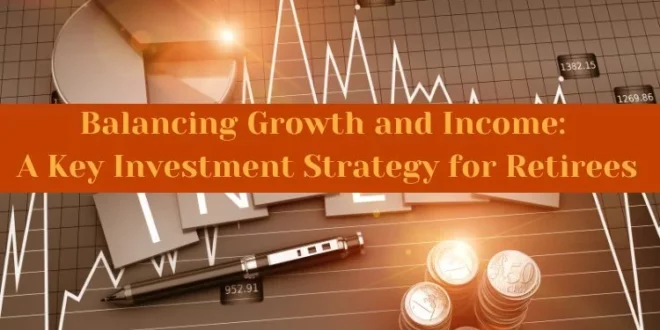When it comes to investing during retirees, there’s a critical balancing act at play. You might feel like you’re walking on a tightrope, needing to balance the potential growth of your investment with the steady income it provides. Let’s simplify this concept and understand why it’s so crucial for retirees to maintain this balance.
Growth vs Income Investments: What’s the Difference?
Let’s start with understanding these terms. ‘Growth investments’ are those that have the potential to increase in value over time. This could include stocks from companies expected to grow significantly, or real estate properties that could appreciate. Imagine you’re planting a tree; the little sapling you start with grows bigger over the years. That’s similar to how growth investments work.
‘Income investments’, on the other hand, provide regular payments back to you. This could come from bonds, which pay you interest, or stocks that pay dividends. To go back to the tree analogy, this would be like a tree that consistently produces fruit for you to harvest.
Why Balance is Key
As a retiree, the income you get from your investments can help cover your day-to-day expenses. But here’s where the balancing act comes in. If you only focus on income and ignore growth, you could lose purchasing power over time due to inflation. This is why you need your investments not only to provide income but also to grow in value.
Let’s use a real-life example. Meet Mr. and Mrs. Thompson, a retired couple who are planning their investment strategy. They know they need income to cover their daily expenses, so they invest a portion of their savings in bonds and dividend-paying stocks. This gives them a steady stream of money coming in.
But they also know that they need to think about growth to outpace inflation. So, they invest another portion of their savings in growth-oriented stocks and real estate. This way, their total investment portfolio can continue to grow, even as they draw an income from it.
Finding Your Balance
The key is to find the right balance between growth and income that fits your specific needs. This balance can depend on many factors, including your risk tolerance, your living expenses, and your other sources of income.
While this may seem like a daunting task, remember that you don’t have to do it alone. Financial advisors can help you assess your situation and create an investment plan that helps you balance the need for income with the potential for growth.
Conclusion
Balancing growth and income in your retirement investments can feel like walking a tightrope. But with careful planning and the right advice, you can maintain this balance and ensure a comfortable retirement. The goal is to have a steady stream of income to cover your needs and enough growth in your investments to keep up with inflation. It’s your time to enjoy the fruits of your hard work, and a balanced investment approach can help you do just that. Happy investing!
 Bond Trading
Bond Trading Finogent Solutions LLP Top Wealth Manager in India
Finogent Solutions LLP Top Wealth Manager in India






